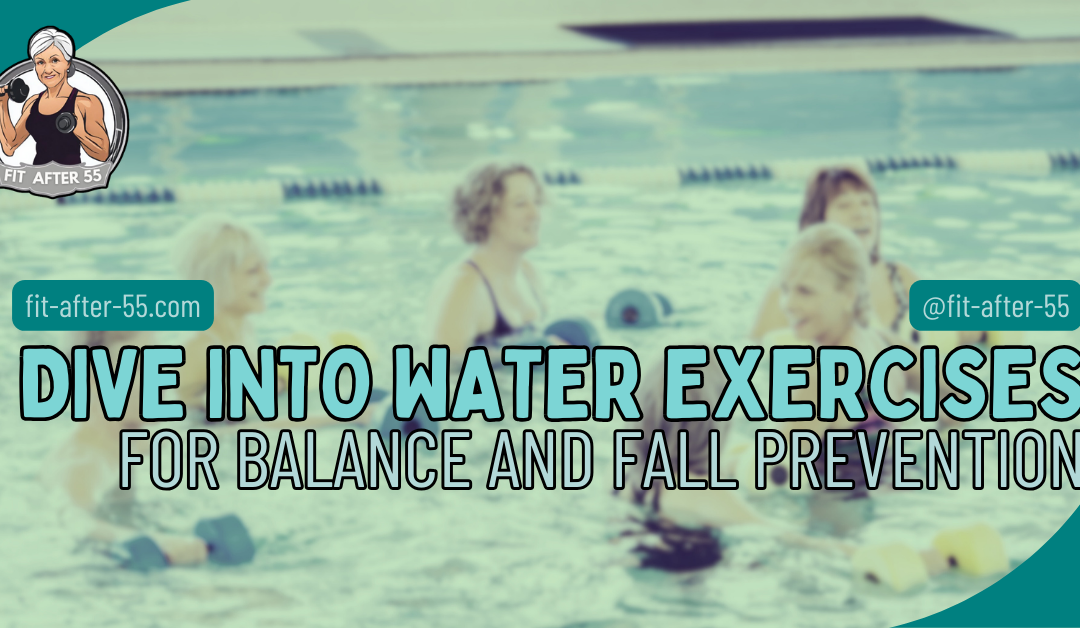Water exercises for balance have become a significant part of my fitness routine. At first, I wondered how splashing around could improve my stability. But as I continued my water exercises, I realized that the buoyancy made me feel weightless, reducing the strain on my joints and muscles. In contrast, the water’s resistance provided a gentle yet effective challenge to my core and leg muscles. Each session made me feel more stable and coordinated in the pool and on land.
After researching and trying different water exercises consistently, I can personally attest to their transformative effects. So, if you’re looking to improve your balance and prevent falls, dive into the world of water exercises— do not let go of this exciting opportunity to enhance your balance and enjoy the pool simultaneously!
Float to Fitness: Harnessing Water Exercises for Balance and Reduce Falls
Water’s buoyancy effect plays a pivotal role here. Imagine having a support system that gently holds you up and reduces the strain on your muscles and joints. This is the buoyancy effect at work, taking the weight off your feet and allowing for movement without the aggressive gravitational pull.
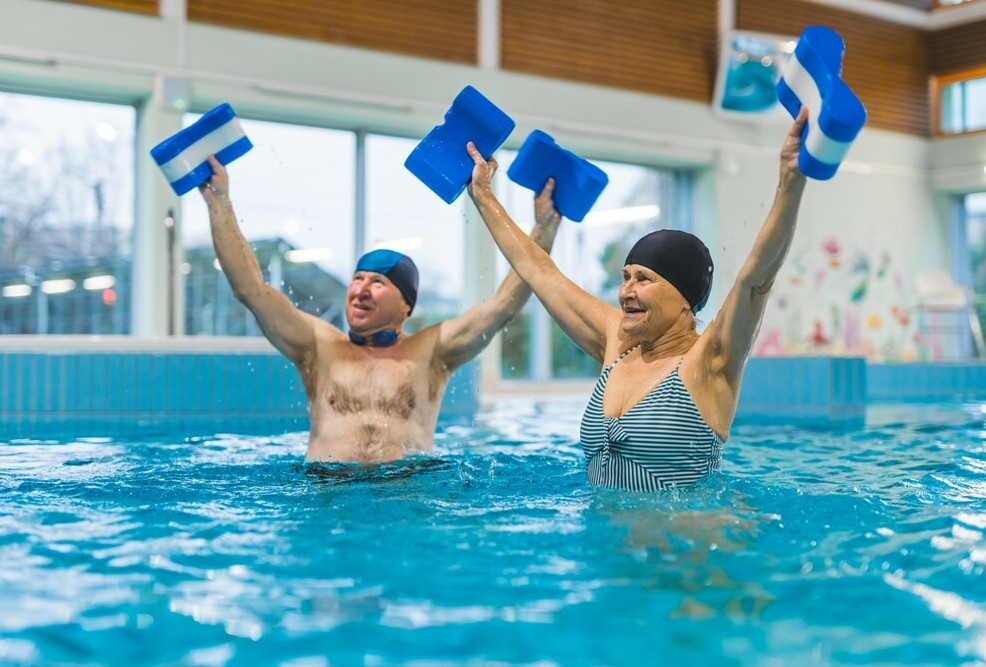
Now, water isn’t just soft support; it’s also a natural balance trainer. As you move through water, the resistance it provides forces your muscles to work harder to maintain stability, which, in turn, strengthens those muscles and improves your balance over time.
If you’re curious about the research, it’s there. Studies have consistently shown that aquatic exercises have significant positive effects on balance and postural control, especially in older adults. These findings aren’t just interesting; they are actionable insights that can help prevent falls and enhance the quality of life.
So, as we segue into the next section, you’re going to find out about how exactly these water exercises can help prevent falls, a problem increasingly important to address as we age. It’s not merely about avoiding injuries but nurturing a more resilient and confident body.
Key Takeaways
- Water exercises improve balance and reduce fall risk: Water’s buoyancy supports your body and its resistance strengthens muscles, leading to better balance and a lower chance of falls.
- Start simple and progress gradually: Exercises like aqua walking, standing on one leg, and sidestepping are great for beginners. As you get stronger, you can move on to more challenging routines like aqua yoga and deep-water workouts.
- Consistency is key: Aim for at least 2-3 water exercise sessions per week to see results. Gradually increase the duration and intensity of your workouts as you improve.
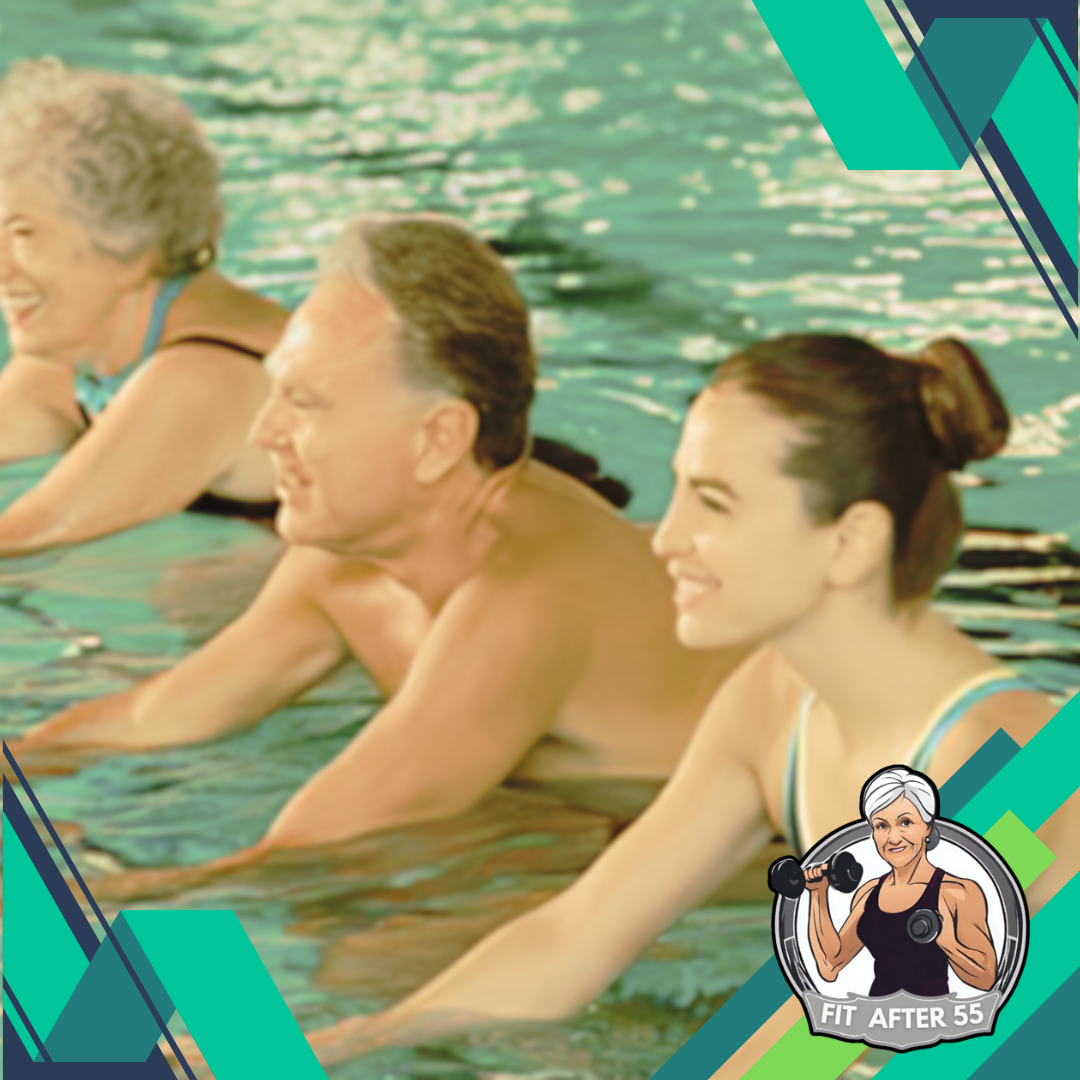
Diving into the Benefits of Water Exercises for Fall Prevention
You might know that staying active is key to preventing falls, particularly as we age. What you may not realize is just how powerful water exercises can be in this arena. Submerging yourself in water provides a unique environment that challenges your balance while offering support and reducing the risk of injury from falls.
Enhanced Muscular Strength and Endurance
Engaging in regular water exercises can significantly enhance muscular strength and endurance. Water’s natural viscosity means your muscles have to work harder to move, which in turn helps build strength. Stronger muscles support your joints and improve your ability to catch yourself if you start to stumble, effectively reducing the risk of a fall.
Video Credit: @WaterExerciseCoach
Improved Joint Flexibility and Range of Motion

Water’s buoyant qualities allow for an improvement in joint flexibility and range of motion. In the pool, you can move in ways you might not be able to on land. This enhanced range of motion can mean better balance and coordination on solid ground.
Increased Core Stability
Core stability is crucial when it comes to balance, and water exercises are excellent for building this stability. Whether you’re practicing water aerobics or simply treading water, the constant need to stabilize yourself in a fluid environment strengthens the core muscles, which act as your body’s stabilizers.
Psychological Benefits
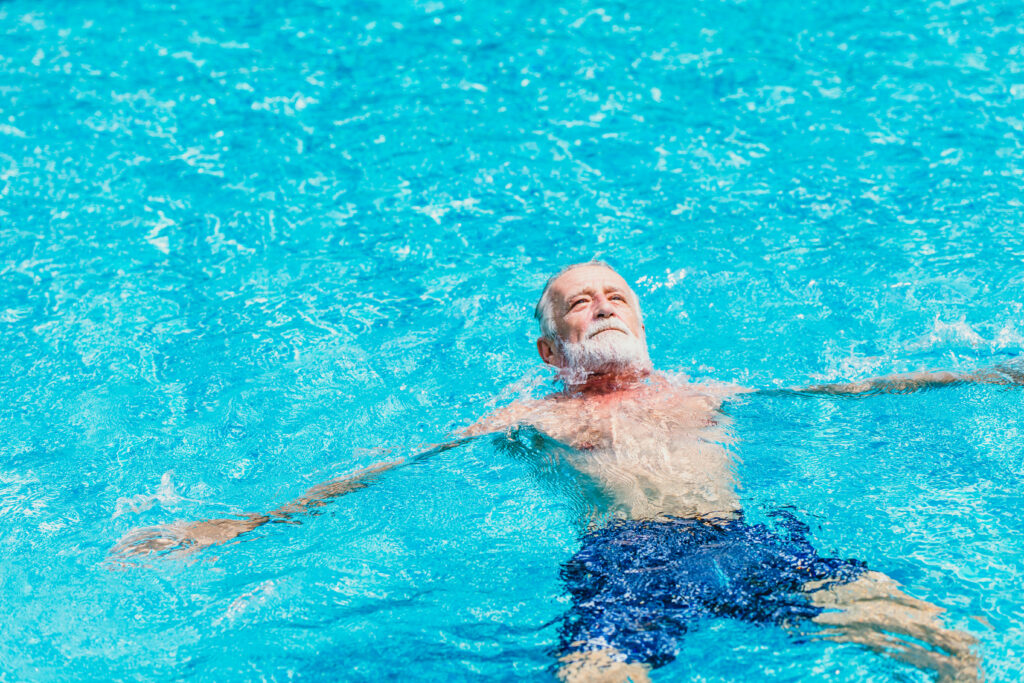
Water exercises can also provide psychological benefits by reducing the fear of falling. This fear can be debilitating and can increase the risk of falls. In water, the fear of a hard landing is significantly diminished, which can help you exercise with more confidence and assurance, further fostering balance and stability.
By now, you’re likely seeing how water exercises can be a game-changer for balance and fall prevention. Don’t worry too much about starting big; the beauty of water exercises is that you can start small and progress at your own pace.
Did You Know?
Submarines control buoyancy to dive and resurface.
Submarines have ballast tanks that can be filled with water or air to adjust buoyancy. By increasing or decreasing the amount of water in the tanks, submarines can control their depth in the water column.
Starting Off: Preparing for Water Exercises
I’m going to walk you through the initial steps of getting ready for water exercises. It’s not just about jumping into the pool; it’s also about making sure you have everything you need for an effective and safe workout.
Choosing the Right Pool Is Crucial
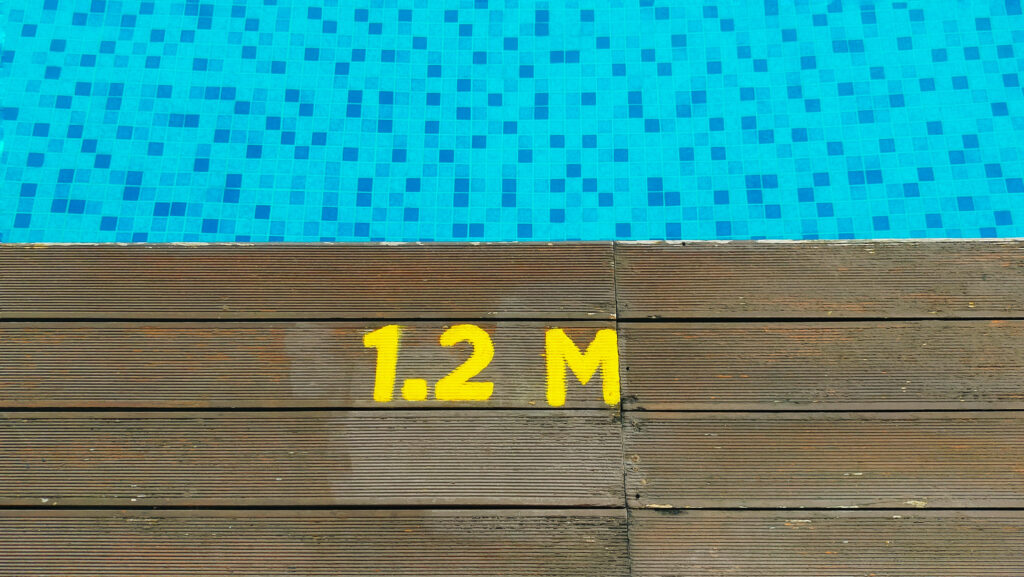
You’re going to want one that has varying depths, giving you the flexibility to perform different exercises comfortably. And don’t overlook the importance of the pool’s temperature. Warmer water can be soothing for muscles and joints, which can be especially beneficial if you’re dealing with arthritis or other conditions.
Proper Gear
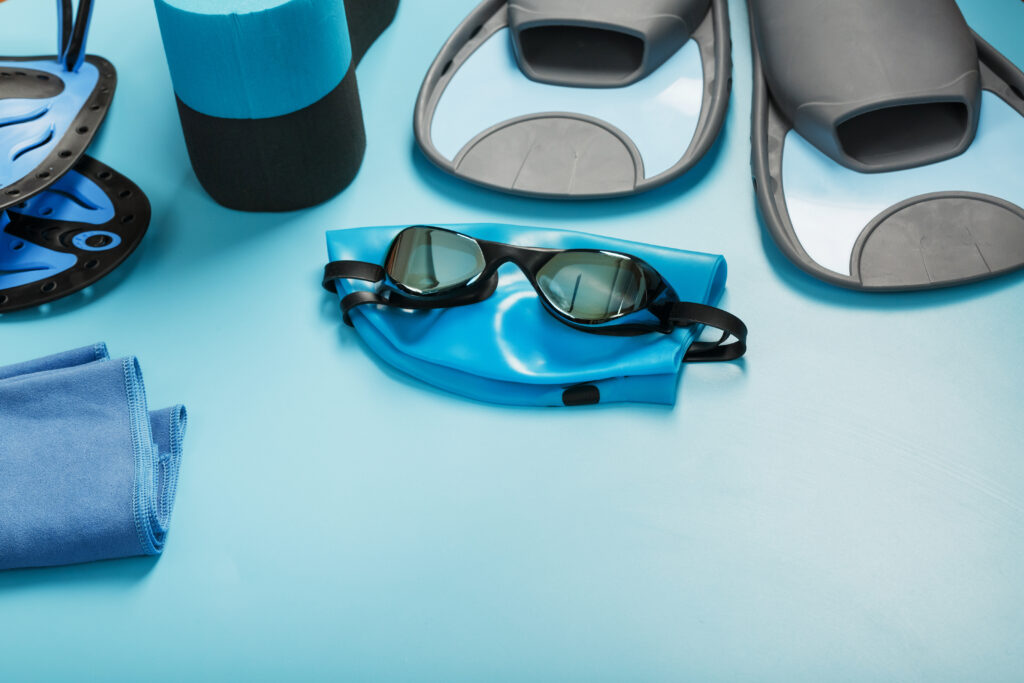
If you want to make the most out of these exercises, the proper gear can make a big difference. This includes a well-fitted swimsuit that won’t restrict movement, aquatic shoes for added grip on slippery pool floors, and perhaps a swim cap and goggles, depending on your preference.
Warm-up Routines
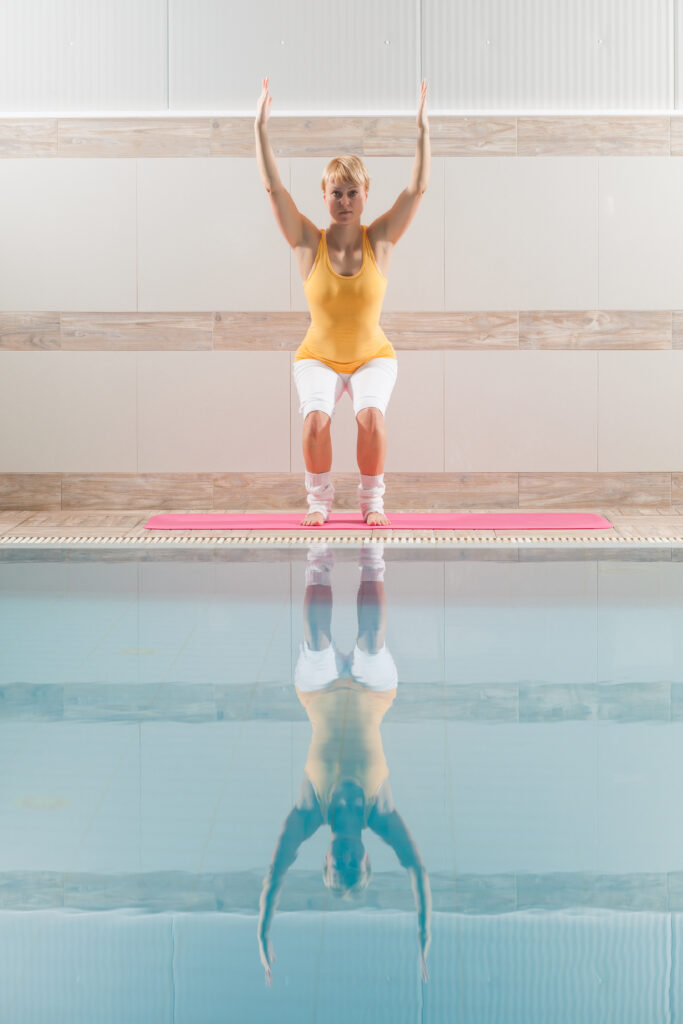
Warm-up routines for water workouts are just as important as dry land workouts. You can start with gentle poolside stretches or go for light aqua jogging to get your heart rate up. This prepares your muscles for the main set of exercises and helps to reduce the risk of injury.
Safety First
Don’t worry too much about dive-in starts or fancy strokes. Safety is key when performing water exercises. Always enter the pool carefully and avoid areas that are overly deep, until you’re confident in your abilities. Understanding your limits and being aware of how your body feels in water are essential for preventing accidents.
Just keep these pointers in mind and you’re going to transition smoothly into the next section, where I’ll introduce you to some simple water exercises to start building your balance.
Simple Water Exercises to Boost Your Balance
Stepping into a pool isn’t just going to cool you off on a hot day; it’s also an entry into a fantastic environment for improving your balance. Let’s start with some simple exercises that will help enhance your stability and reduce your fall risk.

Aqua Walking and Jogging
One of the easiest ones to tackle first is aqua walking and jogging. It’s pretty straightforward: you walk or jog through the water. The beauty of this exercise? It’s a great starting point for anyone, and the water’s resistance makes your muscles work harder than on land, which means you’re strengthening those stability muscles with every step.
Video Credit: @WaterExerciseCoach
Standing on One Leg
Next up is standing on one leg. Now, this might sound too simple, but when you’re in water, it takes on a whole new level of difficulty. The natural motion of the water pushes and pulls you in various directions, forcing your leg and core muscles to work to keep you upright. Alternate between legs and try to increase the time you can maintain the pose with practice.
Sidestepping
Video Credit: @blocksportschiropracticand1535
Sidestepping is another effective move. Just face the pool wall, extend your arms out for support if needed, and step to the side. This lateral movement is superb for those stabilizing muscles along your inner and outer thighs. Combine this with gentle water Tai Chi moves, and you’ll be working on your balance with a dash of elegance and mindfulness.
Once you’ve got the hang of these basic exercises, you’ll be ready to tackle more advanced routines. Trust me, what comes next will not only challenge you further but also keep your workouts fresh and exciting.
Advanced Water Workouts for Enhanced Stability
When you’re looking to crank up the intensity of your aquatic routines, there are several exercises that can provide more complex challenges for balance and stability. These advanced workouts are designed to take your equilibrium to the next level and can be a fun way to mix things up.
Aqua Yoga
Aqua yoga is something I’d recommend. It uses slow, deliberate movements to help you gain control over your body. Not only does it work on your balance, but it also helps with proprioception, which is your body’s ability to sense its position and movement in space.
Deep-Water Workouts
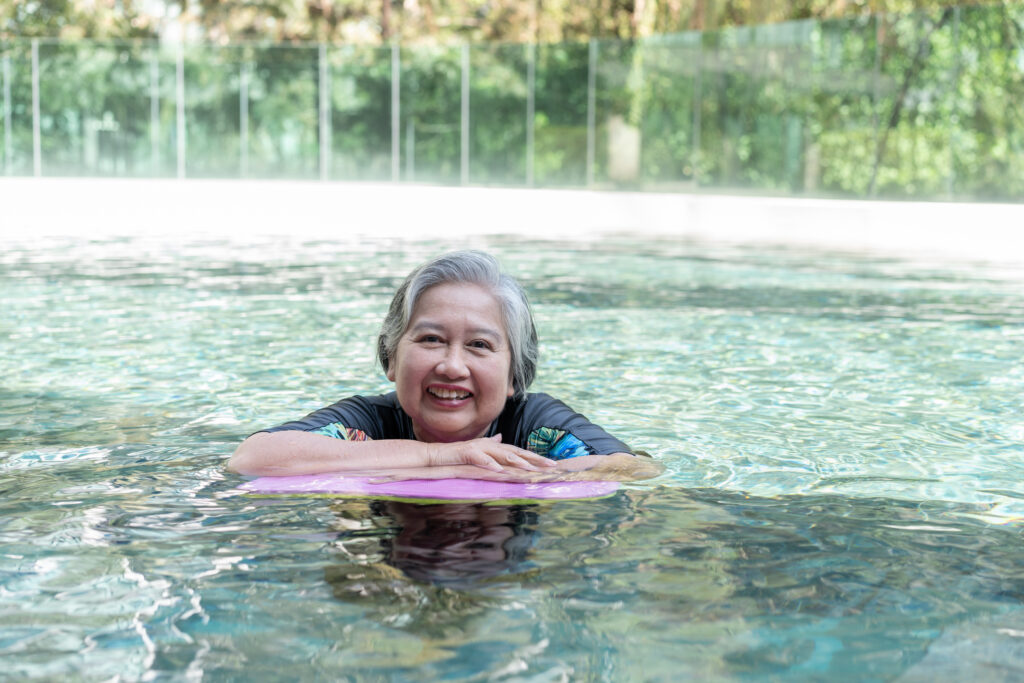
With the assistance of flotation devices, you exercise in deeper water, which removes the safety net of the pool floor. This encourages your core muscles to work overtime to keep you upright and stable.
Water Weights

Using water weights can add a new dimension to your workout. These special weights are designed to be used in the pool and they add resistance to movements, challenging your muscles and balance even further.
Just don’t focus too much on perfection. Your first attempt at these advanced exercises doesn’t need to be flawless. It’s more important to get comfortable with the movements and to enjoy the process, as the balance benefits will follow with practice.
Maintaining Your Water Workout Routine for Long-Term Results
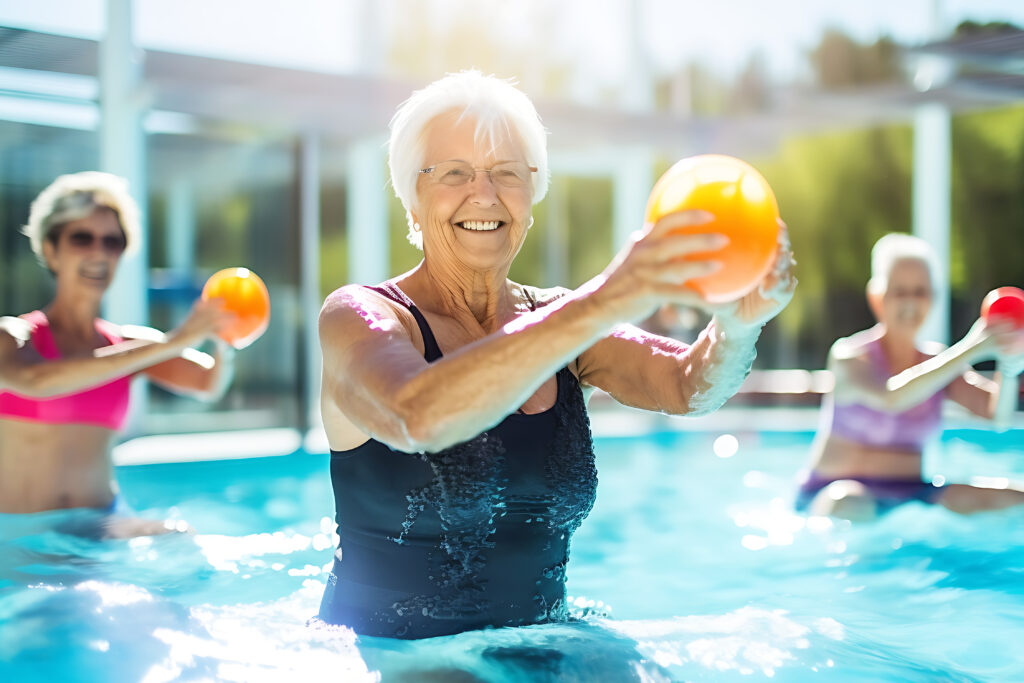
I’m going to walk you through some strategies to keep your water workouts fresh and productive in the long haul. Consistency is key in anything we do, and it’s no different when we’re talking about water exercises designed to improve balance and reduce fall risk.
1. Set Challenging yet Achievable Goals. Consistency is key in water exercises to improve balance and reduce fall risk. Start with smaller, achievable goals to maintain motivation and track progress effectively.
2. Embrace Flexibility in Your Routine. Mix up your exercises rather than sticking to a rigid schedule, and be open to trying new activities. Listen to your body and adjust your routine as you gain strength and confidence.
3. Integrate Water Exercises into Your Daily Routine. Incorporate water workouts into your daily life. Whether you swim laps in the morning, attend a water aerobics class at lunch, or unwind with aqua yoga in the evening, make it a regular part of your schedule.
4. Document and Celebrate Your Progress. Keep track of your achievements and milestones. Documenting your progress not only shows how far you’ve come but also helps you identify what will work best for you in the long run.
5. Build a Support System. Having a workout buddy or seeking feedback from instructors and therapists can provide motivation and valuable insights. A supportive environment can significantly enhance your commitment to and enjoyment of water exercises.
6. Choose Activities You Enjoy. Select water workout activities that align with your interests and lifestyle. When you enjoy what you’re doing, you’re more likely to stick with it consistently, ensuring long-term success and satisfaction.
Video Credit: @TheSeniorCenteredPT
I really hope that these tips help you create a sustainable and enjoyable water exercise routine. Remember, your first attempt doesn’t need to be your last. You can always adjust your approach down the road, picking what works best for you.
From Pool to Balance: Embracing the Power of Water Exercises for Balance
Having explored the transformative benefits of water exercises for balance, I am genuinely inspired by how they’ve enhanced both my physical stability and mental confidence. From aqua walking to deep-water workouts, each exercise has strengthened my muscles and sharpened my special awareness and core stability. The supportive yet challenging environment of water has been instrumental in reducing my fear of falling and improving my overall well-being.
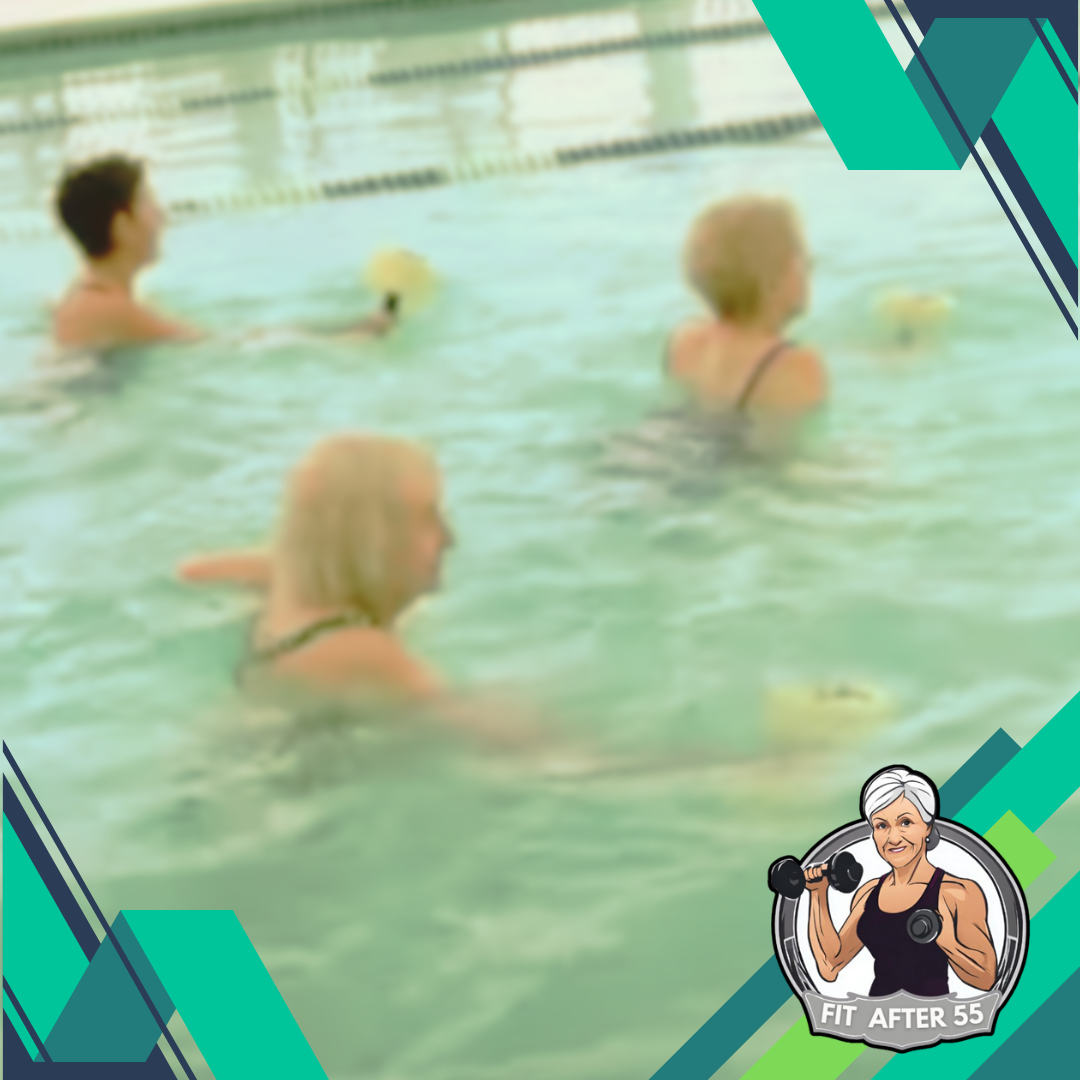
Embrace the freedom and therapeutic benefits of water to build strength, prevent falls, and ultimately, lead a healthier, more balanced life. Your first step into the pool could mark the beginning of a lifetime of improved stability and vitality, and a sense of personal achievement.
Frequently Asked Questions
Welcome to our FAQ section on water exercises for improving balance and preventing falls. Here, we’ve gathered answers to common questions about the advantages of water workouts, effective techniques to enhance your fitness, essential safety tips, and more. Whether you’re just starting out with aquatic fitness or seeking to expand your knowledge, we aim to provide insights that empower you to maximize the benefits of water-based exercises.
Why are water exercises beneficial for balance and fall prevention?
Water provides natural resistance, which helps strengthen muscles without putting too much stress on joints. Its buoyancy also supports the body, making it easier to maintain balance and reducing the risk of falls.
Are water exercises suitable for seniors with arthritis or joint pain?
Yes, water exercises are suitable and often recommended for seniors with arthritis or joint pain. Water’s buoyancy reduces the impact on joints, making movements gentler and less painful.
How often should I do water exercises to see improvements in balance?
Consistency is key. Aim for at least two to three sessions per week, gradually increasing the duration and intensity as you become more comfortable. Start with shorter sessions and build up as your strength and balance improve. This gradual progression will keep you motivated and excited about your improvements, making your journey towards better balance more enjoyable.
Are there specific precautions I should take when doing water exercises for balance?
- Always have a qualified instructor or lifeguard present, especially if you’re new to water exercises.
- Use proper swimwear and footwear to prevent slipping on wet surfaces.
- Be mindful of any health conditions that affect your ability to exercise safely in water, and consult with a healthcare professional if necessary.
Unlock Your Best Self Yet: Journey with Fit After 55
Ready to embrace your best self after 55? Dive into Fit After 55! Visit our official website to explore expert guides, personalized tips, and inspiring success stories designed for your wellness journey. Whether you’re starting fresh or continuing your fitness adventure, discover resources to thrive and achieve your wellness goals. Join a vibrant community dedicated to aging with strength, vitality, and joy. Explore a healthier future now at https://fit-after-55.com and unlock your best years ahead!

